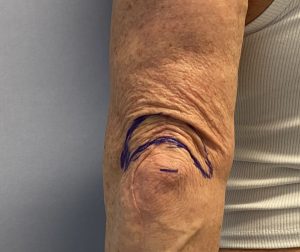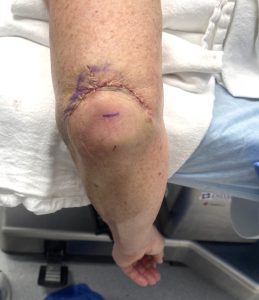Background: There are many different body locations where various types of lifts are performed for loose/excessive skin. Familiar lifts include procedures such as tummy tucks and brachioplasties. (arm lifts) The need for these lifts usually comes from weight loss and aging. No matter where on the body the lift is performed it involves an excisional pattern of skin and fat removal with the closure line placed in a favorable location. A scar results but the goal is to consider the scar a superior aesthetic tradeoff to that of the loose skin.
Once very uncommon place for a lift is near a moveable joint area such as the knees and elbows. Both joint areas can accumulate loose skin folds due to repetitive motion. It can also occur due to weight loss where the lax skin ‘falls down’ to where it stops when it stops at the joint area. This occurs because the tissues directly over the joint has a greater thickness and is more attached. Thus the loose falls down to but usually stops from completely covering the joint surface. (anterior aspect of the knee and posterior side of the elbow)
Such skin folds above the knee and elbow can be removed but being near a moveable joint poses some different considerations than most lifts. The movement of the joint will affect how much of the skin folds can be removed as well as scar placement and potential scar widening.
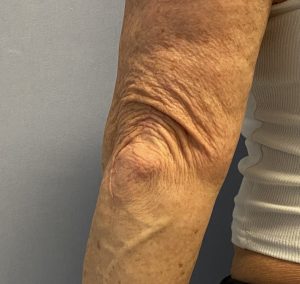

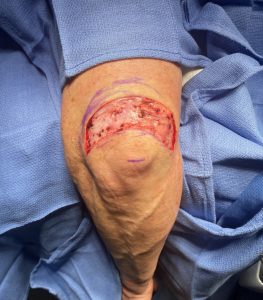
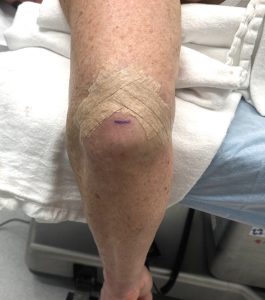
Elbow lifts are unique as the flexion and extension of the arm places tension on the incision/scar as it heals. As a result the skin fold excision pattern must be done with keeping the scar location away from the elbow point above it in the distal triceps area. The amount of skin fold excision must also be done with how it affects the scar location and the tension on the scar when the elbow is bent at 90 degrees.
Key Points:
1) Elbow lifts are the subtotal excision of redundant loose skin above the elbow with the tradeoff of a scar replacement.
2) Elbow lifts should be marked in the standing position with arms both fully extended and at 90 degree to avoid over resection and postoperative wide scarring.
3) The elbow lift closure line should be superior to the elbow joint in a half moon or frowning shape.
Dr. Barry Eppley
World-Renowned Plastic Surgeon



